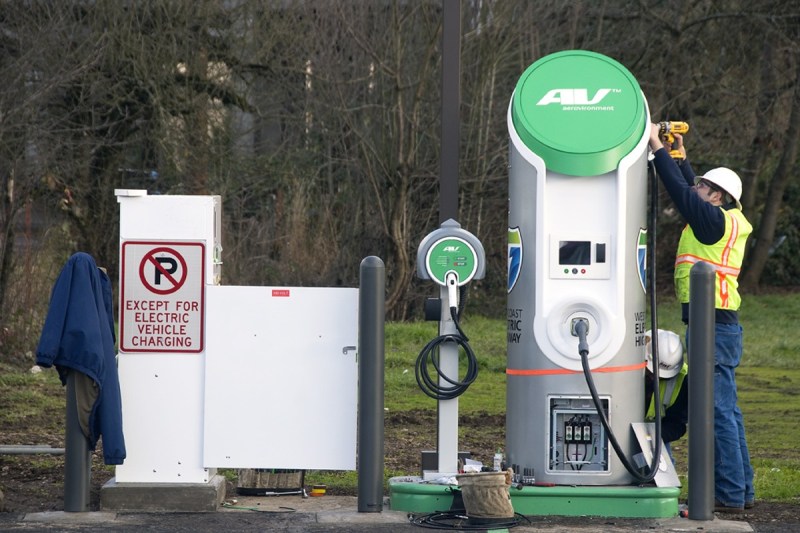It might take only five minutes to fill up gas tanks. In contrast, electric vehicles connected to an EV charger might take anywhere from 15 to 30 minutes to charge. It’s a problem many scientists and automotive experts have been trying to fix.
“Fast charging is the key to increasing consumer confidence and overall adoption of electric vehicles,” Eric Dufek, Ph.D., said in a press release. “It would allow vehicle charging to be very similar to filling up at a gas station.”

Toward that end, Dufek and his research cohort recently presented their design plans for a 10-minute charging method at the American Chemical Society in Chicago. This superfast electric fill-up applied to powering different types of EVs swiftly without damaging batteries. The hope is that this technological advance can help to supercharge President Biden’s objective that half of all U.S. vehicles sold are electric or hybrid by 2030.
Why faster EV charging is important
Consumer Reports surveyed 8,027 Americans from varying locations, ethnicities, and backgrounds to determine “how people perceive EVs and the potential purchase barriers.” The encouraging news was that over one-third of respondents said that they would consider purchasing a fully electric vehicle. The top reason why surveyees reported hesitancy was charging logistics and distance allowed on a full charge. Fast electric refills could help to alter those perceptions.
The problem with fast EV charging
The reason that most EVs take several minutes to recharge is that jamming an electric charge into lithium-ion batteries can quickly cause problems. The American Chemical Society reports that when charging, lithium ions migrate from the cathode on one side of lithium-ion batteries, to the anode on the other. Speeding up lithium ions might decrease charge time, but, in turn, could cause a lithium buildup from the ions that don’t make the migration. This concentration can collect, leading to harmful cathode wear and possible premature battery failure.
Though these types of failures are not common, they do happen. The cost of fixing an EV that’s out of warranty can be more than enough to frighten off potential buyers. Over half of those surveyed by Consumer Reports stated that both the costs to purchase and/or maintain an EV are impediments to purchase. Failure of major electric components can sometimes cost more than a new car itself. Ebay listings for used Tesla battery packs often go for over $30,000.
The EV charging solution
To address this delicate balance, Dufek and his team at the Idaho National Laboratory incorporated machine learning techniques to ‘teach’ chargers about the condition of lithium-ion batteries, and to create subsequent charging protocols distinct to each battery. This teaching came via algorithms, training computers to analyze 20,000 to 30,000 data points to indicate the quality of battery charge and the amount of aging or degradation, if any. Researchers then input this data “to identify and optimize new protocols” that were then applied to new batteries. And it worked.
“We’ve significantly increased the amount of energy that can go into a battery cell in a short amount of time,” Dufek said. “Currently, we’re seeing batteries charge to over 90% in ten minutes without lithium plating or cathode cracking.”
The research team plans to continue work to further develop more efficient methods that optimize fast lithium-ion charging. The ultimate goal, Dufek said, is for electric vehicles to eventually be able to “tell” charging stations their power up requirements, so juice can be delivered safely in only a few minutes.
Editors' Recommendations
- Bad buys: These 10 cars have the worst resale values
- A new study highlights the impact switching to EVs could have on our health
- Report: Only one-third of car dealerships have an EV available for purchase right now
- I went to the new MINI Manual Driving School to learn how to have fun driving a stick
- A golf cart manufacturer may have just made your new favorite EV — the CRU Car




